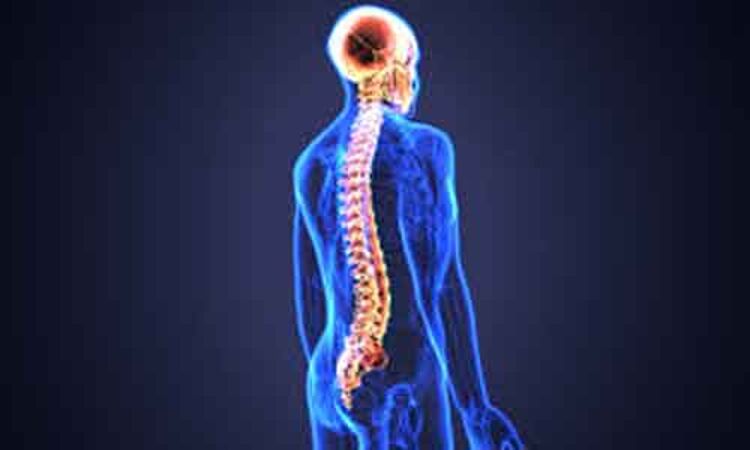- Home
- Medical news & Guidelines
- Anesthesiology
- Cardiology and CTVS
- Critical Care
- Dentistry
- Dermatology
- Diabetes and Endocrinology
- ENT
- Gastroenterology
- Medicine
- Nephrology
- Neurology
- Obstretics-Gynaecology
- Oncology
- Ophthalmology
- Orthopaedics
- Pediatrics-Neonatology
- Psychiatry
- Pulmonology
- Radiology
- Surgery
- Urology
- Laboratory Medicine
- Diet
- Nursing
- Paramedical
- Physiotherapy
- Health news
- Fact Check
- Bone Health Fact Check
- Brain Health Fact Check
- Cancer Related Fact Check
- Child Care Fact Check
- Dental and oral health fact check
- Diabetes and metabolic health fact check
- Diet and Nutrition Fact Check
- Eye and ENT Care Fact Check
- Fitness fact check
- Gut health fact check
- Heart health fact check
- Kidney health fact check
- Medical education fact check
- Men's health fact check
- Respiratory fact check
- Skin and hair care fact check
- Vaccine and Immunization fact check
- Women's health fact check
- AYUSH
- State News
- Andaman and Nicobar Islands
- Andhra Pradesh
- Arunachal Pradesh
- Assam
- Bihar
- Chandigarh
- Chattisgarh
- Dadra and Nagar Haveli
- Daman and Diu
- Delhi
- Goa
- Gujarat
- Haryana
- Himachal Pradesh
- Jammu & Kashmir
- Jharkhand
- Karnataka
- Kerala
- Ladakh
- Lakshadweep
- Madhya Pradesh
- Maharashtra
- Manipur
- Meghalaya
- Mizoram
- Nagaland
- Odisha
- Puducherry
- Punjab
- Rajasthan
- Sikkim
- Tamil Nadu
- Telangana
- Tripura
- Uttar Pradesh
- Uttrakhand
- West Bengal
- Medical Education
- Industry
Osmotic therapy Device may help improve treatment of Spinal Cord Injuries

Researchers at Marlan and Rosemary Bourns College of Engineering Jacques S. Yeager, Sr. Professor of Bioengineering Victor G. J. Rodgersg and UCR School of Medicine biomedical sciences professor Devin Binder have developed an osmotic therapy device that gently removes fluid from the spinal cord to reduce swelling in injured rats with good results. The device can eventually be scaled up for testing in humans. The research has been published in an open-access paper published in Frontiers in Bioengineering and Biotechnology.
When injured, the spinal cord swells, restricting blood flow, resulting in further, often critical and permanent motor, sensory, and autonomic function damage. Rapid prevention of spinal cord swelling immediately after injury is key to preventing more serious damage. The only treatment to date has been steroid therapy with methylprednisolone, which is minimally effective.
The device consists of a tangential flow module supporting a semipermeable membrane connected to a hydrogel that rests on the exposed spinal cord. Artificial cerebrospinal fluid containing the protein albumin to initiate osmosis passes across the device side of the membrane, transporting water molecules from the spinal cord. Both fluids drain into a small chamber and cycle again through the device to remove more water. The amount of water removed is small compared to the amount of osmolyte, allowing for recirculation.
The authors have found in previous studies that relatively small increases in the percent of water content can cause significant swelling in the brain. These experiments showed that the osmotic therapy device removed enough water to prevent brain swelling and was capable of removing even more. They also found that removing the excess water quickly enough in brain swelling improved neurological outcomes. This is a key hope for the spinal cord device as well.
The team plans to continue improving the device through longer experiments on rats before eventually moving on to human trials.
Together with biomedical sciences professor Byron Ford, Rodgers is developing a similar device that drains fluid directly from the brain and introduces neuregulin-1, a molecule produced naturally by the body to regulate communication between cells in the brain and heart and promote their growth, to improve treatment and reduce damage of severe strokes.
Hina Zahid Joined Medical Dialogue in 2017 with a passion to work as a Reporter. She coordinates with various national and international journals and association and covers all the stories related to Medical guidelines, Medical Journals, rare medical surgeries as well as all the updates in the medical field. Email: editorial@medicaldialogues.in. Contact no. 011-43720751
Dr Kamal Kant Kohli-MBBS, DTCD- a chest specialist with more than 30 years of practice and a flair for writing clinical articles, Dr Kamal Kant Kohli joined Medical Dialogues as a Chief Editor of Medical News. Besides writing articles, as an editor, he proofreads and verifies all the medical content published on Medical Dialogues including those coming from journals, studies,medical conferences,guidelines etc. Email: drkohli@medicaldialogues.in. Contact no. 011-43720751


